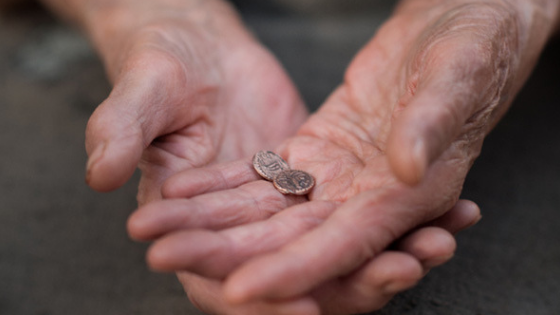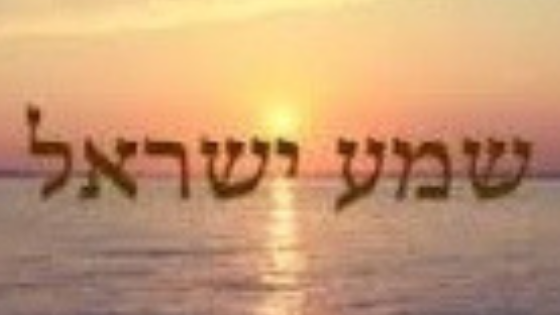
Shabbat Table Talk
Parashat Naso – Erev Shabbat, 02 June 2017
Week of 28 May- 03 June
Torah portion: Num. 4:21-7:89 Haftarah: Judges 13:2-25
Download
In a chance encounter at a guesthouse in Jerusalem I met a woman who had come to Israel to work on an archeological dig. Noticing my copy of Torah and the seal with which I was practicing the Hebrew script, she suggested that I might learn more if I used a pick and shovel! Her scorn did not dampen my enthusiasm for studying G-d’s word. The wisdom of her view became apparent to me on a subsequent visit to the Israel Museum.
In 1979 two amulets dating to the 7th century BCE were discovered during excavations at the Iron Age burial site of Ketef Hinnom, which overlooks the Hinnom Valley, just opposie Mount Zion. Each amulet contained a rolled up sheet of silver inscribed with ancient Hebrew script, which revealed a version of Numbers (6:24-26) known Birkat Kohanim, the Priestly Blessing. Scholars have determined these scrolls are the earliest known citations of Biblical texts, significantly predating the Dead Sea scrolls. The ancient Hebrew lettering was incised with a sharp stylus, thinner than a human hair. These fragile slivers of silver which are on display at the Israel Museum shed light on the Psalm (12:6): ‘The words of the Lord are pure words: as silver tried in a furnace…” (Caesar, Biblearcheology).
It is well to remember that scripture was handed down as an oral/aural (speaking/hearing) revelation. With that in mind, try reading Birkat Kohanim (Num. 6:24-26) in Hebrew for a sense of the poetic rhythmic structure. Each line builds in length. Three Hebrew words increase to five, then to seven. The progression of the number of words suggests an outward movement and expansion of YHWH’s blessing, producing a crescendo, which culminates in peace. More than the absence of war, peace is a right relationship with YHWH and a sense of completeness wherein all things connect in harmony. YHWH’s name, (the second word in each line) is repeated three times to emphasize that YHWH is the source of all blessings. This is confirmed (v.27) “Thus they shall link my name with the people of Israel, and I will bless them.”
This brief and very beautiful ancient prayer, which survives in synagogue and Christian liturgies to this day, is so familiar that its meaning is sometimes not appreciated. The introduction (v.22) as well as Lev. 9:22-23 makes clear that among the chief duties of the priest is to bless the people in the name of the Lord. The blessing issues solely from the Lord; it is the priest’s function to channel it (Etz Hayim, 803).
“May YHWH bless you and keep you” focuses on tangible gifts given according to the individual’s needs and protection from losing that wealth, recognizing that material blessings are vulnerable to loss. (Sifrei). “May YWHW shine his face upon you and favor you” looks to the blessing of enlightenment – that a person may understand the purposes YHWH has in mind for them. For Sifrei these blessings are the light of wisdom and the light of Torah, which unlike wealth require no protection to prevent their being stolen. “May YHWH lift up his face toward you and grant you shalom!” YWH turns his head in our direction, forgives shortcomings, hears prayers, grants requests, blesses us with peace (Etz Hayim, 804, 805).
For Reflection and Discussion: 1. Carry this thought with you: that the peace of YHWH is offered to us in every place and at every time, for its dwelling place is in our hearts. 2. How can we be a blessing to others?
Bibliography: Birkat Kohanim translation is from Fox, The Five Books of Moses (New York, 1995); Lieber, Etz Hayim:Torah and Commentary (New York, 2001); Caesar, The Blessing of the Silver Scrolls, (www.biblearcheology.org/post, 2010/01/06); Israel Museum Searchable Collections Database (item 198069).
This week’s teaching commentary was prepared by
Mary Ann Payne, Catechist, Melbourne, Australia, Bat Kol alum 2007, 2011, 2015
Email: mapayne77@gmail.com
[Copyright © 2017]
…..……………………………………………………………………………………………………
PLEASE NOTE: The weekly Parashah commentaries represent the research and creative thought of their authors, and are meant to stimulate deeper thinking about the meaning of the Scriptures. While they draw upon the study methods and sources employed by the Bat Kol Institute, the views and conclusions expressed in these commentaries are solely those of their authors, and do not necessarily represent the views of Bat Kol. The commentaries, along with all materials published on the Bat Kol website, are copyrighted by the writers, and are made available for personal and group study, and local church purposes. Permission needed for other purposes. Questions, comments and feedback are always welcome.
……………………………………………………………………………………………………………
Bat Kol Institute for Jewish Studies, Jerusalem
~~1983-2017~~
“Christians Studying the Bible within its Jewish milieu, using Jewish Sources.”
Website: www.batkol.info Parashah Admin. gill@batkol.info



